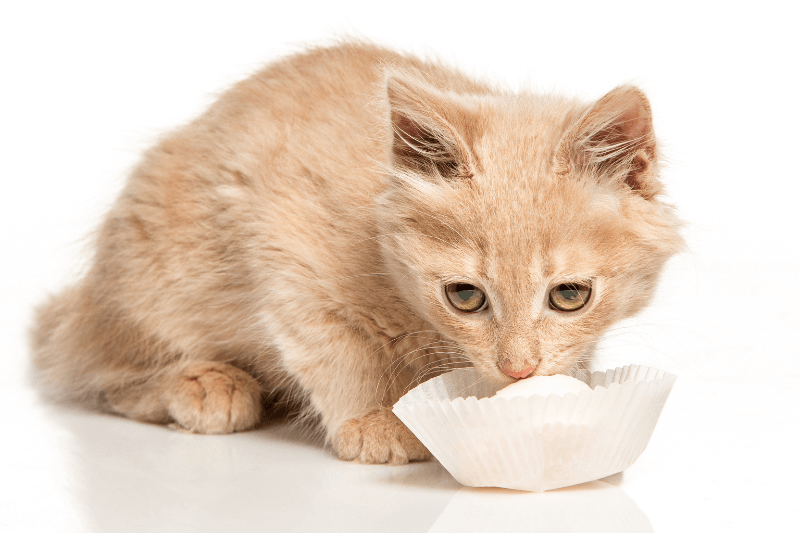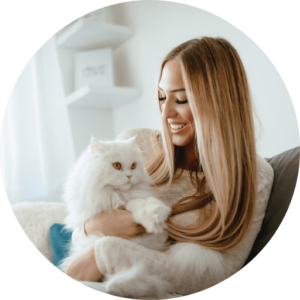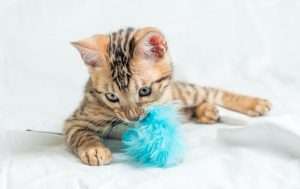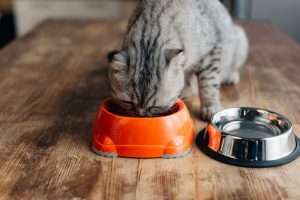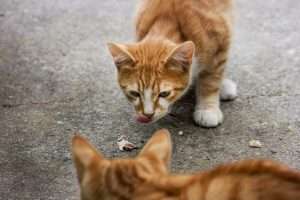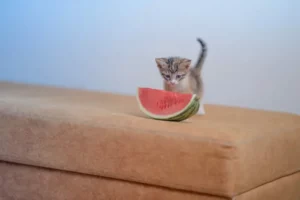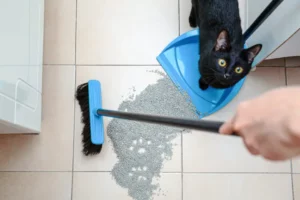Table of Contents
Introduction
The Nutritional Value of Scallops
Scallops are a type of shellfish that are known for their delicate texture and sweet taste. They are also a good source of essential nutrients that are beneficial for feline health. Scallops contain high amounts of protein, which is important for maintaining strong muscles and bones in cats. They also contain omega-3 fatty acids, which are essential for supporting a healthy immune system, reducing inflammation, and improving heart health.
In addition to protein and omega-3 fatty acids, scallops are also a good source of vitamins and minerals that cats need to stay healthy. Scallops contain vitamin B12, which is important for maintaining a healthy nervous system, and selenium, which is an essential mineral that supports a healthy immune system. Scallops are also low in fat and calories, which makes them a great choice for cats who need to maintain a healthy weight.
It’s important to note, however, that scallops should only be fed to cats in moderation as part of a balanced diet. While they are a good source of nutrients, they should not be the only source of protein or omega-3 fatty acids in a cat’s diet. It’s also important to prepare scallops properly and avoid feeding cats any parts of the scallop that may be difficult to digest or pose a choking hazard, such as the shell or the digestive tract.
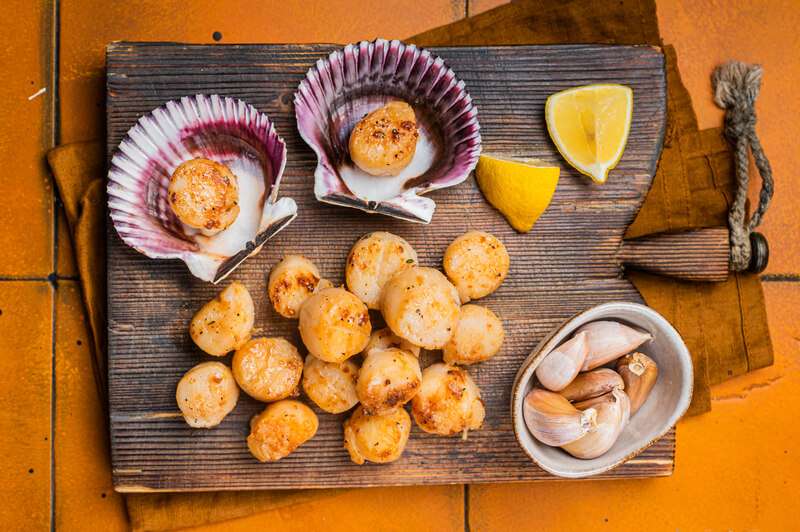
Can Cats Eat Scallops?
Scallops are a type of seafood that are enjoyed by many humans, but can cats safely eat them too? While scallops are not toxic to cats, there are some important considerations to keep in mind before sharing this seafood treat with your feline friend.
First and foremost, it’s important to note that cats are obligate carnivores, which means their bodies are designed to primarily eat meat. While scallops do contain protein, they should not be considered a staple in a cat’s diet. In fact, feeding cats a diet high in seafood can lead to an imbalance of nutrients, including an excess of minerals like phosphorus and magnesium, which can be harmful to feline health.
In addition, scallops and other seafood can be a source of foodborne illness in cats. Raw or undercooked scallops can contain harmful bacteria or parasites, such as salmonella or listeria, that can cause gastrointestinal upset or even serious illness in cats. It’s always important to properly cook and handle seafood before feeding it to your cat to reduce the risk of food poisoning.
If you do decide to give your cat scallops as a treat, it’s important to do so in moderation. As with any new food, introduce scallops gradually and watch for any signs of digestive upset, such as vomiting or diarrhea. It’s also important to remove any shells or other inedible parts before feeding scallops to your cat, as these can pose a choking hazard or cause intestinal blockages.
In summary, while scallops can provide some nutritional benefits for cats, they should not be a regular part of a cat’s diet. Feeding seafood in moderation and ensuring it is properly cooked and prepared can help reduce the risk of digestive issues or food poisoning in feline friends.
Preparing Scallops for Cats
While scallops can offer a range of nutritional benefits for cats, it’s important to prepare them safely and appropriately to avoid any potential health risks. Here are some tips on how to safely prepare scallops for your feline friend:
Remove the Shell: Scallops are usually sold with their hard, protective shell attached. It’s important to remove the shell before feeding them to your cat to prevent choking or other digestive issues. You can use a pair of scissors or a sharp knife to carefully cut the muscle away from the shell.
Cook Thoroughly: Raw scallops can contain harmful bacteria that can cause food poisoning in cats, just as it can in humans. Therefore, it’s important to cook scallops thoroughly before feeding them to your cat. Steaming, boiling, or baking scallops are all effective ways to cook them.
Avoid Additives: It’s important to prepare scallops without adding any spices, seasonings, or other additives that can be harmful to cats. While some cats may enjoy a little seasoning, it’s best to err on the side of caution and keep the scallops plain.
When incorporating scallops into your cat’s diet, it’s important to do so in moderation and as part of a balanced and nutritious diet. Scallops should not be the only source of protein in your cat’s diet, but rather one of several sources. Consult with your veterinarian to determine how much scallop to feed your cat and how often.
Other types of seafood can also be incorporated into your cat’s diet, such as canned tuna or salmon. However, it’s important to also prepare these types of seafood safely and appropriately, and to avoid feeding them to your cat exclusively.
By safely preparing scallops and incorporating them into a balanced diet, you can provide your cat with the nutritional benefits of this tasty seafood without compromising their health.

Alternative Treats for Cats
While scallops can provide a variety of nutritional benefits for cats, they are not the only option available. There are plenty of other treats and foods that can be safely enjoyed by felines.
Cooked Meat – Cooked meat is a great source of protein for cats, and it’s easy to prepare. Chicken, turkey, and beef are all good options. Make sure to remove any bones and excess fat before serving. Avoid giving your cat any raw meat, as it can contain harmful bacteria that can cause illness.
Fish – Fish is another type of seafood that can be safe for cats to eat. However, it’s important to choose the right types of fish and to prepare it properly. Cooked salmon or tuna can be a good source of protein and omega-3 fatty acids for cats. Make sure to remove any bones and serve the fish in small portions.
Fruits and Vegetables – Fruits and vegetables can also be a healthy treat for cats. Some good options include cooked sweet potato, green beans, and peas. However, it’s important to keep in mind that cats are obligate carnivores and require a diet that is primarily made up of animal protein. Fruits and vegetables should only be given as occasional treats.
Commercial Cat Treats – There are many commercial cat treats available that are specifically formulated for feline nutrition. Look for treats that are made with high-quality ingredients and free from artificial colors and flavors.
When choosing alternative treats for your cat, it’s important to keep in mind that they should be given in moderation. Treats should only make up a small portion of your cat’s overall diet. A balanced and nutritious diet is essential for your cat’s health and wellbeing.
It’s also important to consult with your veterinarian before introducing any new foods or treats to your cat’s diet. Your veterinarian can help you determine the right portion sizes and ensure that your cat’s nutritional needs are being met.
FAQs:
No, scallops are not safe for cats with seafood allergies. Just like humans, cats can develop allergies to specific types of food, including seafood. If your cat has a known seafood allergy, it's best to avoid feeding them any type of seafood, including scallops.
Yes, feeding too many scallops or any other type of food can harm your cat's health. Overfeeding your cat can lead to obesity and other health problems. Additionally, feeding too many scallops can lead to an imbalance in your cat's diet, as they need a variety of nutrients from different types of food.
No, it is not okay to give your cat raw scallops. Raw seafood can contain harmful bacteria and parasites that can cause food poisoning in cats. It's important to always cook seafood thoroughly before feeding it to your cat.
Scallops are a good source of protein and omega-3 fatty acids, both of which are important for a cat's overall health and wellbeing. Protein helps to maintain muscle mass, while omega-3 fatty acids can improve coat and skin health, as well as support immune function.
If your cat is allergic to scallops, they may exhibit symptoms such as vomiting, diarrhea, itchy skin, or respiratory issues. If you suspect that your cat may be allergic to scallops, it's important to stop feeding them and consult with your veterinarian. Your vet may recommend allergy testing or other diagnostic tests to determine the cause of your cat's symptoms.
Conclusion
In conclusion, while scallops can provide nutritional benefits for cats, it’s important to approach feeding them to your feline friend with caution. Understanding the potential risks and benefits of incorporating scallops into your cat’s diet, as well as properly preparing and portioning them, can help ensure your cat’s safety and wellbeing. Remember to always consult with your veterinarian before introducing new foods to your cat’s diet, especially if they have any known allergies or health conditions. By taking a proactive and informed approach to your cat’s diet, you can help support their overall health and happiness.


